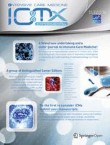The respiratory pressure—abdominal volume curve in a porcine model
Increasing intra-abdominal volume (IAV) can lead to intra-abdominal hypertension (IAH) or abdominal compartment syndrome. Both are associated with raised morbidity and mortality. IAH can increase airway pressu...
